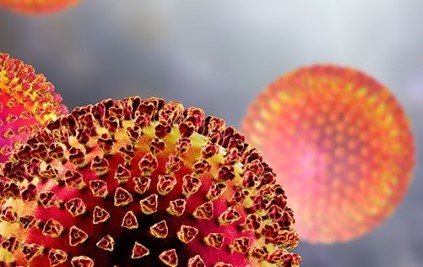The virus is transmitted between people through respiratory droplets and contact routes according to a scientific brief issued today by the World Health Organization (WHO).
Droplet transmission occurs when a person is in close contact (within 1 m) with someone who has respiratory symptoms (e.g. coughing or sneezing,) and is therefore at risk of having his/her mouth, nose and eyes exposed to potentially infective respiratory droplets.
Droplet transmission may also occur through fomites in the immediate environment around the infected person. Fomites are objects or materials which have been contaminated by the virus and are likely to carry infection.
WHO sums up that transmission of the COVID-19 virus can occur by direct contact with infected people and indirect contact with surfaces in the immediate environment or with objects used on the infected person.
Airborne transmission is still disputed. It is different from droplet transmission as it refers to the presence of microbes within droplet nuclei, which are generally considered to be and which result from the evaporation of larger droplets or exist within dust particles. They may remain in the air for long periods of time and be transmitted to others over distances greater than 1 m.
Health authorities in some countries recommend a social distance of 1,5 or 2 m. In Belgium, the distance when outdoors is 1,5 meter.
In the context of COVID-19, airborne transmission may be possible in specific circumstances and settings in which procedures that generate aerosols are performed in caring for patients. However, in analysis of 75,465 COVID-19 cases in China, airborne transmission was not reported.
There is some evidence that COVID-19 infection may lead to intestinal infection and be present in faeces. However, to date only one study has cultured the COVID-19 virus from a single stool specimen. There have been no reports of faecal−oral transmission of the COVID-19 virus to date.
Based on the available evidence, WHO continues to recommend droplet and contact precautions for those people caring for COVID-19 patients and contact and airborne precautions for circumstances and settings in which aerosol generating procedures are performed.
The European Centre for Disease Prevention and Control (ECDC) goes further and recommends airborne precautions for any situation involving the care of COVID-19 patients.
WHO recommendations emphasize the importance of rational and appropriate use of all personal protective equipment (PPE), not only masks, which requires correct and rigorous behaviour from health care workers, particularly in doffing procedures (putting on and removing PPE) and hand hygiene practices.
WHO continues to emphasize the utmost importance of frequent hand hygiene, respiratory etiquette, and environmental cleaning and disinfection, as well as the importance of maintaining physical distances and avoidance of close, unprotected contact with people with fever or respiratory symptoms.
The Brussels Times

